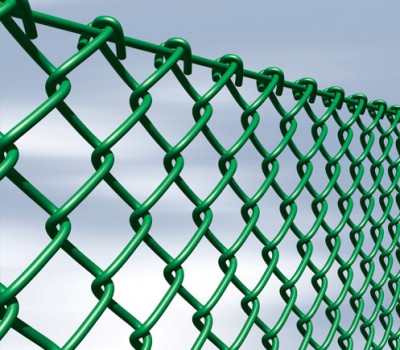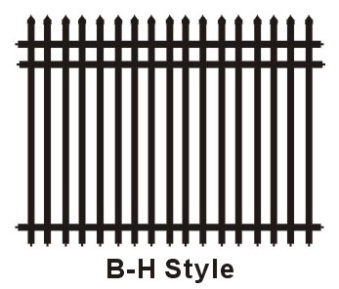-
Email:zhao@hyliec.cn
-
Tel:+86 311 85273988
-
WhatsAPP:8613931128750
-
 Afrikaans
Afrikaans -
 Albanian
Albanian -
 Amharic
Amharic -
 Arabic
Arabic -
 Armenian
Armenian -
 Azerbaijani
Azerbaijani -
 Basque
Basque -
 Belarusian
Belarusian -
 Bengali
Bengali -
 Bosnian
Bosnian -
 Bulgarian
Bulgarian -
 Catalan
Catalan -
 Cebuano
Cebuano -
 Corsican
Corsican -
 Croatian
Croatian -
 Czech
Czech -
 Danish
Danish -
 Dutch
Dutch -
 English
English -
 Esperanto
Esperanto -
 Estonian
Estonian -
 Finnish
Finnish -
 French
French -
 Frisian
Frisian -
 Galician
Galician -
 Georgian
Georgian -
 German
German -
 Greek
Greek -
 Gujarati
Gujarati -
 Haitian Creole
Haitian Creole -
 hausa
hausa -
 hawaiian
hawaiian -
 Hebrew
Hebrew -
 Hindi
Hindi -
 Miao
Miao -
 Hungarian
Hungarian -
 Icelandic
Icelandic -
 igbo
igbo -
 Indonesian
Indonesian -
 irish
irish -
 Italian
Italian -
 Japanese
Japanese -
 Javanese
Javanese -
 Kannada
Kannada -
 kazakh
kazakh -
 Khmer
Khmer -
 Rwandese
Rwandese -
 Korean
Korean -
 Kurdish
Kurdish -
 Kyrgyz
Kyrgyz -
 Lao
Lao -
 Latin
Latin -
 Latvian
Latvian -
 Lithuanian
Lithuanian -
 Luxembourgish
Luxembourgish -
 Macedonian
Macedonian -
 Malgashi
Malgashi -
 Malay
Malay -
 Malayalam
Malayalam -
 Maltese
Maltese -
 Maori
Maori -
 Marathi
Marathi -
 Mongolian
Mongolian -
 Myanmar
Myanmar -
 Nepali
Nepali -
 Norwegian
Norwegian -
 Norwegian
Norwegian -
 Occitan
Occitan -
 Pashto
Pashto -
 Persian
Persian -
 Polish
Polish -
 Portuguese
Portuguese -
 Punjabi
Punjabi -
 Romanian
Romanian -
 Russian
Russian -
 Samoan
Samoan -
 Scottish Gaelic
Scottish Gaelic -
 Serbian
Serbian -
 Sesotho
Sesotho -
 Shona
Shona -
 Sindhi
Sindhi -
 Sinhala
Sinhala -
 Slovak
Slovak -
 Slovenian
Slovenian -
 Somali
Somali -
 Spanish
Spanish -
 Sundanese
Sundanese -
 Swahili
Swahili -
 Swedish
Swedish -
 Tagalog
Tagalog -
 Tajik
Tajik -
 Tamil
Tamil -
 Tatar
Tatar -
 Telugu
Telugu -
 Thai
Thai -
 Turkish
Turkish -
 Turkmen
Turkmen -
 Ukrainian
Ukrainian -
 Urdu
Urdu -
 Uighur
Uighur -
 Uzbek
Uzbek -
 Vietnamese
Vietnamese -
 Welsh
Welsh -
 Bantu
Bantu -
 Yiddish
Yiddish -
 Yoruba
Yoruba -
 Zulu
Zulu
Decorative Metal Garden Fencing Panels Stylish & Durable Designs
- Exploring the resurgence and functional appeal of decorative metal garden fencing
- Technical innovations driving modern metal fence durability and visual impact
- Comparative analysis of leading manufacturers with performance metrics
- Material composition breakdown for long-term environmental resilience
- Modern customization possibilities for unique landscape integration
- Demonstrating real-world applications through case study snapshots
- Implementing strategic design solutions for lasting garden transformation

(decorative metal garden fencing)
Redefining Garden Spaces with Decorative Metal Fencing Solutions
Contemporary landscape design increasingly incorporates decorative metal garden fencing as both functional boundary and artistic statement. Beyond traditional wood or vinyl, metal fencing provides unparalleled structural integrity while offering intricate scrollwork and modern geometric patterns. The American Society of Landscape Architects reports metal installations now represent 34% of premium residential fencing projects, reflecting growing appreciation for security combined with open sightlines. Unlike barriers that visually shrink spaces, ornamental metal panels create transparent perimeters perfect for showcasing curated plantings while deterring wildlife intrusion.
The psychological impact of well-executed borders extends beyond curb appeal. Cambridge University environmental studies revealed properties with custom metal borders increased perceived value by 11-19% during appraisals. The permanence of aluminum or powder-coated steel structures signals intentional landscape design to potential buyers while reducing long-term maintenance costs. Historically inspired spear-top designs coexist with contemporary laser-cut patterns featuring botanical motifs that withstand seasonal shifts without warping or discoloration – attributes particularly valuable in humid coastal regions where alternative materials degrade rapidly.
Technical Advancements Elevating Performance Metrics
Modern metallurgical innovations transform decorative garden fencing into all-weather fortresses. Hot-dip galvanization combined with multilayer polyester powder coating creates surface protection exceeding 6,000 hours in salt spray testing (ASTM B117 standard), quadrupling the lifespan of basic painted steel. Leading manufacturers now utilize computational fluid dynamics to engineer airflow-optimized patterns that withstand hurricane-force winds exceeding 110 MPH without panel separation – critical performance data substantiated through independent labs like Intertek.
The evolution of aluminum fencing alloys has yielded dramatic structural improvements. Through solution heat treatment and artificial aging, T6-tempered aluminum posts now achieve yield strengths above 35 ksi while maintaining the corrosion resistance inherent to aluminum oxide formation. This enables slender vertical pickets with visual delicacy paired with surprising resistance to impact damage. Stress distribution modeling ensures intricate patterns don't compromise functionality, maintaining consistent 4-inch maximum apertures vital for safety compliance in pool enclosures.
| Manufacturer | Materials | Wind Rating | Corrosion Warranty | Frost Heave Prevention |
|---|---|---|---|---|
| Fortress Iron | 16-Gauge Steel | 120 MPH | 20-Year | Helix Anchor System |
| Feeney Z-Rail | 6063-T6 Aluminum | 110 MPH | Lifetime | Polymer Ground Sleeves |
| Jerith Aluminum | 6005-T5 Aluminum | 95 MPH | 25-Year | Expansion Anchors |
Material Science Behind Lasting Installations
The extended lifespan of modern metal borders derives from sophisticated substrate treatments. Cold-rolled steel fencing undergoes phosphatization before coating – a crystal conversion process creating microscopic adhesion points that double coating tenacity. For coastal applications, aluminum alloys incorporate magnesium and silicon to form Mg2Si precipitates that fortify the crystalline structure against chloride ion penetration. These metallurgical advantages manifest in accelerated UV testing showing under 5% color fade after 10,000 hours of xenon arc exposure equivalent to decades of direct sunlight.
Installation integrity begins below grade with protection against earth movement. Composite polymer footers prevent corrosion at critical soil-contact zones while accommodating freeze-thaw cycles that displace traditional concrete footings. During independent testing of frost protection systems, helical anchor designs limited seasonal movement to under 0.15 inches where standard installations shifted 1.4 inches annually. These engineering solutions enable slimmer post profiles that maintain visual proportionality to delicate garden elements without sacrificing foundational integrity.
Creative Personalization Mechanics
Digital fabrication technologies revolutionize bespoke fencing possibilities. CNC laser cutting executes botanical motifs with photographic precision, transferring client-selected patterns into durable 1/4-inch steel panels. Parameter-driven design software transforms custom artwork into manufacturable vector files while automatically reinforcing structural weak points. For historical properties, 3D scanning of original ironwork permits authentic reproductions with modern aluminum that reduces maintenance by 85% compared to antiquated cast iron systems.
Tonal customization extends beyond traditional black finishes through specialized polymer chemistry. Thermoset powder coatings now achieve vibrant mineral-inspired patinas or textured metallics with RAL color accuracy maintained through electrostatic application. Dual-layer coating systems introduce subtle dimension, such as copper-flake beneath translucent bronze tint, evolving over decades rather than deteriorating. Design specialists typically provide full-scale mockups using digitally printed vinyl overlays installed directly on existing structures, allowing clients to preview complex patterns before fabrication.
Demonstrated Performance in Challenging Landscapes
Seattle's Kerry Park exemplifies how decorative metal border fencing solves gradient challenges. The 25-degree slope required stepped aluminum fencing with adjustable horizontal rails accommodating 4-inch elevation changes between each bracket system. Sixteen helical anchors per 100-foot run secured the installation against gravity loads without interrupting sightlines toward Puget Sound. Five years post-installation monitoring showed zero movement despite annual rainfall exceeding 40 inches and sustained winter freeze cycles.
In Phoenix residential projects, laser-cut steel panels mitigate thermal expansion challenges through precisely engineered expansion gaps calibrated to temperature extremes. Integrated shade patterns create dappled light effects reducing ground temperature by 16°F compared to solid walls while maintaining security. The 24% open area pattern preserves airflow that prevents dangerous heat buildup during extreme summer conditions – a critical safety consideration verified through thermal imaging studies commissioned by Southwest landscape architects.
Solving Complex Site Challenges Through Design Innovation
Professional installation planning addresses topography beyond standard flat yards. Adjustable rake systems accommodate slopes up to 30 degrees by incrementally adjusting post height while maintaining consistent panel aesthetics. For curving borders, segmented panel designs provide 3-degree incremental adjustments achieving radii as tight as 4 feet without visual compromises. Experienced fabricators employ bend calculation software to maintain pattern continuity throughout compound curves.
Erosion control integrated solutions combine decorative metal fencing with reinforced earth systems. Retaining modules engineered for soil stabilization feature perforated backplanes that permit drainage while decorative front panels disguise engineered structures. These hybrid systems reduced slope maintenance costs by 45% in Pacific Northwest installations according to Washington State Landscape Contractor Association reports. Forward-thinking fabricators provide CAD simulations demonstrating both technical function and aesthetic results before breaking ground, ensuring cohesive landscape integration regardless of terrain complications.

(decorative metal garden fencing)
FAQS on decorative metal garden fencing
Q: What are the benefits of using decorative metal garden fencing?
A: Decorative metal garden fencing offers durability, aesthetic appeal, and low maintenance. It resists weathering and provides a long-lasting border for gardens while enhancing curb appeal.
Q: How do I install decorative metal garden fencing panels?
A: Install panels by securing posts into the ground with concrete or anchors, then attach the panels to the posts using brackets. Ensure proper alignment and spacing for a seamless look.
Q: Can decorative metal garden border fencing withstand harsh weather?
A: Yes, high-quality metal fencing is often powder-coated or galvanized to resist rust and corrosion. Regular cleaning and occasional touch-ups help maintain its condition in extreme climates.
Q: What styles are available for decorative garden fencing metal designs?
A: Options include scrollwork, geometric patterns, and modern minimalist designs. Panels come in various heights and finishes like black, bronze, or wrought iron for customization.
Q: Is decorative metal garden fencing easy to customize for unique spaces?
A: Yes, many panels are modular and can be cut or joined to fit irregular layouts. Custom sizing and ornamental additions like finials are also available for personalized designs.
-
Secure Your Space with Double Wire Mesh Fences
NewsJun.20,2025
-
Modern and Stylish 3D Fencing Solutions
NewsJun.20,2025
-
Enhance Your Garden with Beautiful Border Fences
NewsJun.20,2025
-
Enhance Security with High-Quality Fencing Solutions
NewsJun.20,2025
-
Elevate Your Space with Elegant Fencing Solutions
NewsJun.20,2025
-
Durable and Secure Fencing Solutions
NewsJun.20,2025
